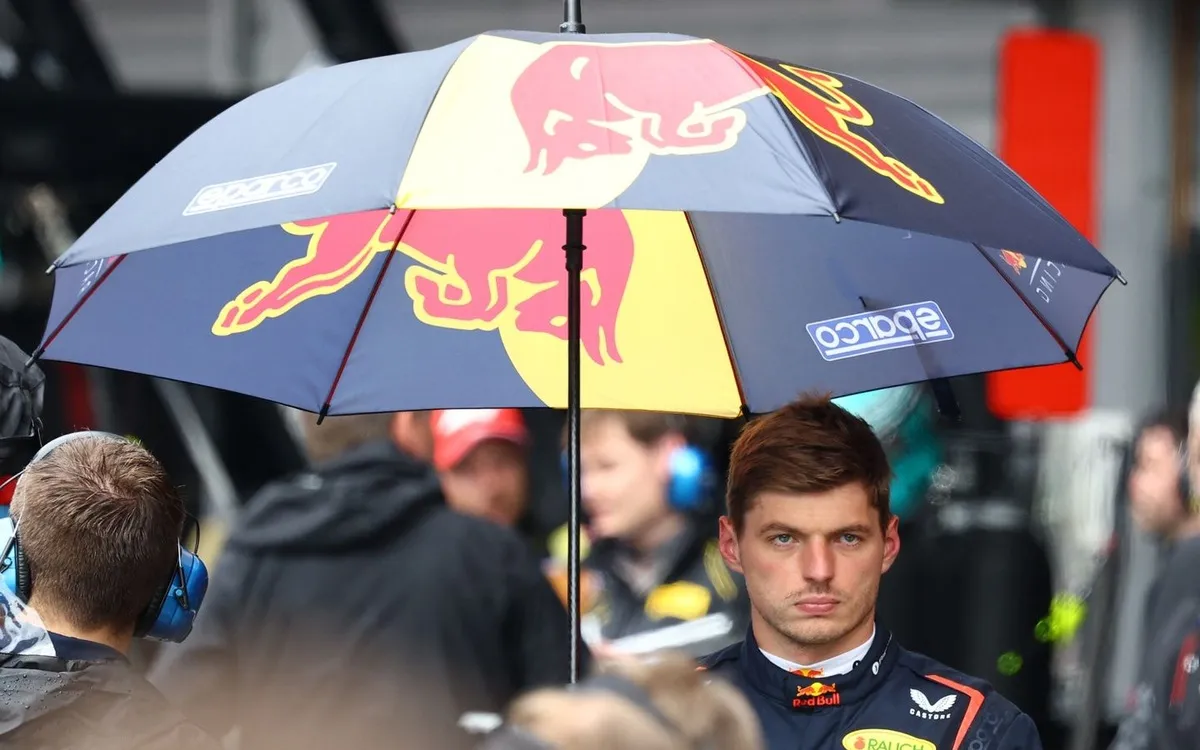
Max Verstappen, the talented driver for Red Bull Racing, has expressed his strong discontent with the decision made by Formula 1 race control to delay the start of the Belgian Grand Prix. The delay lasted over an hour due to concerns about visibility caused by heavy rain at the famed Spa-Francorchamps circuit. Verstappen believes this decision unfairly penalized Red Bull’s strategy, which was geared towards a wet weather set-up.
As rain poured down just before the scheduled start of the race, race control chose to suspend the starting procedure after the formation lap. This was primarily due to concerns over limited visibility on the track. The start was postponed until 16:20 local time, a significant 80 minutes after the original start time, while marshals worked diligently to remove standing water from the track.
After an additional four laps behind the safety car, the race finally resumed with a rolling start. The conditions improved, allowing drivers to switch to slick tyres just a few laps later. However, the timing of the race resumption backfired for Red Bull, who had anticipated a wet race and opted for a downforce-heavy set-up. This left both Verstappen and his fellow driver Yuki Tsunoda struggling to overtake rivals due to a lack of top speed, particularly on the approach to Turn 5.
After being trapped behind Ferrari’s Charles Leclerc for 39 laps, Verstappen voiced his frustration, feeling that his team was punished for preparing for wet conditions. “We made a choice with the set-up, and they only allowed us to drive in almost slick conditions, which was a bit disappointing,” he remarked. He highlighted the contrast to the previous British Grand Prix, where race control had been criticized for releasing cars too early in poor conditions, leading to a serious crash.
Max Verstappen noted, “Of course, we spoke after Silverstone to be a little bit more cautious with the decisions, but this was at the other extreme for me.” He added that once the race transitioned to dry tyres, the car’s balance issues compounded the team's challenges, rendering them too slow on the straights.
As a recognized wet-weather specialist, Verstappen felt that the track was nearly ready for racing at the original start time. He criticized other drivers who urged race control to delay the start, saying, “Between Turn 1 and 5, there was quite a bit of water, but if you do two laps behind the safety car, it would have been a lot more clear.” He argued that the more laps run, the better the track conditions would become, suggesting that waiting for completely dry conditions was unnecessary.
Other drivers, however, appreciated race control's cautious approach, especially given the history of the Spa-Francorchamps track. Carlos Sainz from Williams stated, “On a normal track, yes, I think we could have started maybe 5-10 minutes earlier... but at Spa and the history of this track, it’s better to be safe than have an accident and be regretful.”
Pierre Gasly, who lost a close friend in a tragic accident at the same venue, echoed this sentiment, emphasizing the importance of safety. “When we started the first lap, we couldn’t see a thing, so that was the right call to put out a red flag,” he remarked, acknowledging the difficult decision race control had to make.
The debate surrounding the Belgian Grand Prix start delay highlights the ongoing challenges faced by race control in balancing safety with competitive racing. While some drivers like Max Verstappen felt penalized by the decision, others respected the caution exercised in light of the circuit's history. As the Formula 1 season continues, the balance between safety and racing conditions remains a critical topic in the world of motorsport.